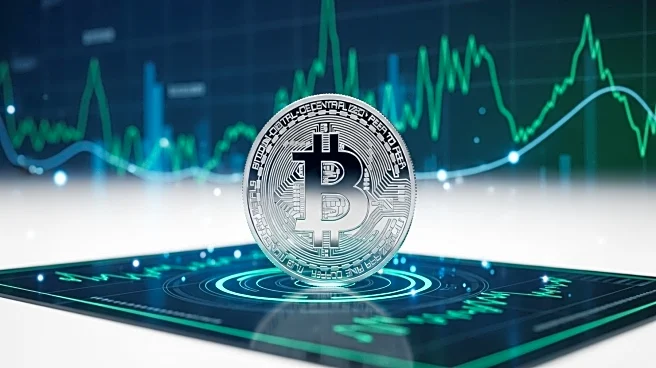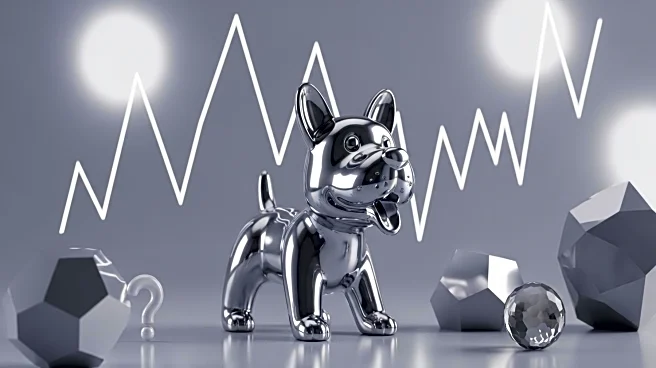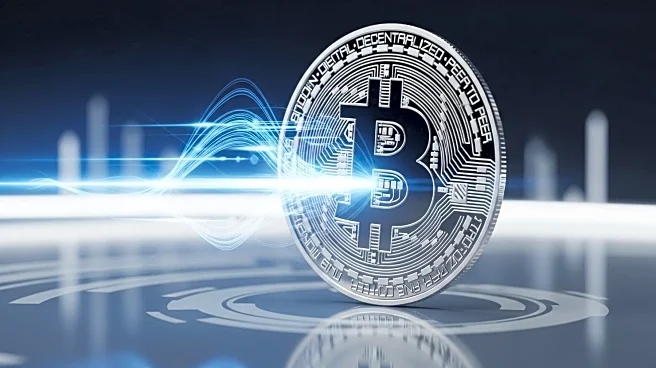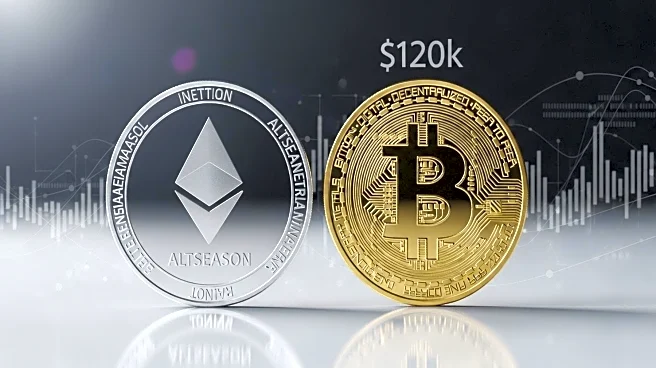What's Happening?
Dogecoin experienced a significant selloff during the overnight session from September 21 to 22, with its price dropping from $0.27 to $0.25. This decline was driven by institutional traders who offloaded positions, resulting in record trading volumes exceeding 2.15 billion tokens. The selloff breached support levels and established new resistance zones, leaving Dogecoin consolidating around $0.25. Analysts have identified a '1-2 pattern' formation, which historically precedes breakouts above the $0.28–$0.30 range. Despite the selloff, institutional support has emerged around $0.25, indicating potential recovery attempts.
Why It's Important?
The recent selloff in Dogecoin highlights the volatility and influence of institutional trading in the cryptocurrency market. The formation of the '1-2 pattern' suggests potential for a breakout, which could impact Dogecoin's price trajectory and investor sentiment. The ability of Dogecoin to maintain support at $0.25 is crucial, as failure to do so could lead to further declines. The situation underscores the importance of technical analysis in predicting market movements and the role of institutional investors in shaping price dynamics.
What's Next?
Traders are closely monitoring whether Dogecoin can hold the $0.25 support level amid record liquidation flows. Institutional positioning around the $0.28–$0.30 resistance band will be key if recovery gains traction. Upcoming sessions will be critical in determining whether accumulation or further distribution dominates, with follow-through volumes providing insights into market sentiment. Broader sentiment may also be influenced by external factors such as ETF delays and regulatory uncertainty.
Beyond the Headlines
The selloff and subsequent pattern formation in Dogecoin may have broader implications for the cryptocurrency market, particularly in terms of institutional involvement and market stability. The event highlights the need for robust risk management strategies among traders and investors, as well as the potential impact of regulatory developments on market sentiment.










